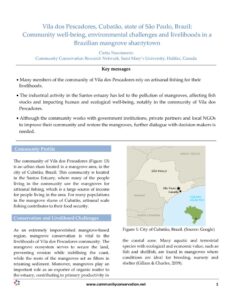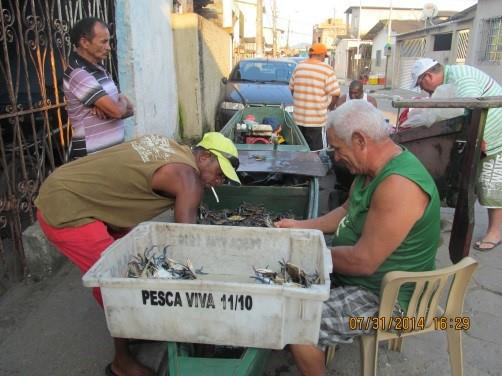
27 Jul Vila dos Pescadores, Cubatão, State of São Paulo, Brazil
Cintia Gillam
Key messages
• Many members of the community of Vila dos Pescadores rely on artisanal fishing for their livelihoods
• The industrial activity in the Santos estuary has led to the pollution of mangroves, affecting fish stocks and impacting human and ecological well-being, notably in the community of Vila dos Pescadores;
• Although the community works with government institutions, private partners and local NGOs to improve their community and restore the mangroves, further dialogue with decision-makers is needed.
Community profile
The community of Vila dos Pescadores (Figure 1) is an urban slum located in a mangrove area, in the city of Cubatão, Brazil. This community is located in the Santos Estuary, where many of the people living in the community use the mangroves for artisanal fishing, which is a large source of income for people living in the area (Figures 2 — 5). For many populations in the mangrove slums of Cubatão, artisanal scale fishing contributes to their food security.
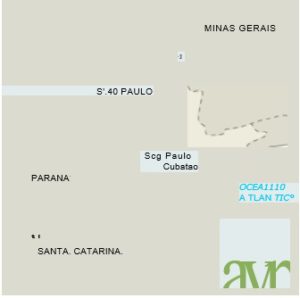
Figure 1: City of Cubatao, Brazil. (Source: Google)
Conservation and livelihood challenges
As an extremely impoverished mangrove-based region, mangrove conservation is vital to the livelihood of Vila dos Pescadores community. The mangrove ecosystem serves to secure the land, preventing erosion while stabilising the coast, while the roots of mangroves act as filters in retaining sediment. Moreover, mangroves play an important role as an exporter of organic matter to the estuary, contributing to primary productivity in the coastal zone. Many aquatic and terrestrial species with ecological and economic value, such as fish and shellfish, are found in mangroves where conditions are ideal for breeding, nursery and shelter(2).
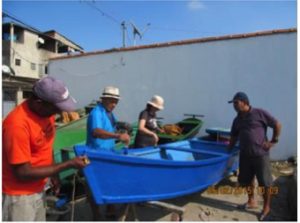
Figure 2: Fishers painting their boats (Photo Credit: Cintia Gillam)
The community of Vila dos Pescadores also suffers from environmental vulnerability by being located in an industrial hub in the Santos Estuary, the largest port in Latin America. Garbage accumulates in the mangroves of the community. The pollution affects fishing by trash accumulation in spawning sites for fish and shellfish, and destruction of fish nets.
Similarly, environmental disasters in the estuary harm fishers’ livelihoods by causing fish mortality and environmental pollution, further affecting the community’s and fishers’ well-being. On 2 April 2015, an environmental disaster occurred in the Santos Estuary when a fire occurred in the Ultracargo fuel company involving six fuel tanks. Consequently, fishers at Vila dos Pescadores were temporarily unable to fish, impacting their main source of income and livelihood as well as their well-being, as fishing is part of their identity (See Figure 3).
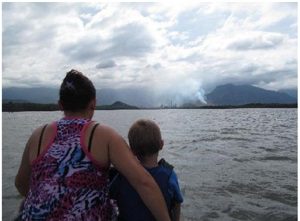
Figure 3: Fisher and her son in the Santos Estuary (Photo Credit: Cintia Gillam)
Community initiatives
The Vila dos Pescadores community leader José Arnaldo dos Santos (Vadinho) works extensively with government agencies, the private sector and NGOs to improve the well-being and living conditions of community members. Vadinho is a fisher and also the president of the Community Association of Vila dos Pescadores.
The community association has benefitted from a partnership with the Instituto de Pesca (Fisheries Institute of São Paulo state, located in the neighbouring city of Santos), which gives the community important support about fishers’ rights and environmental education(1). The institute undertakes significant research on coastal resource management in the area.
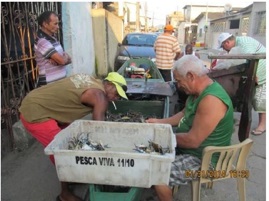
Figure 4: Fishers at Vila dos Pescadores (Photo Credit: Cintia Gillam)
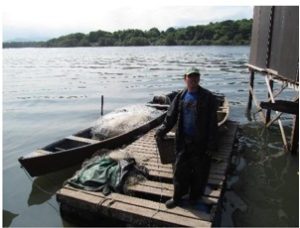
Figure 5: Fishers at Vila dos Pescadores (Photo Credit: Cintia Gillam)
Aiming to improve the well-being of the community, the community leader Vadinho also works with local private partners and NGOs in the area such as Teto (roof)(4). Teto’s community work is focused on the most excluded slums, with its main engine being the joint action of its residents and volunteers, who work to generate concrete solutions to social problems considered a priority: poverty. Among other NGOs, Teto’s staff and volunteers worked with Vadinho, aiming for mobilisation and self-management and support networks of Vila dos Pescadores community members. The main objective is for the community to achieve their basic rights, through the regularisation of community members’ property, installation or settlement of basic services, construction of permanent housing and improvement of community infrastructure(4). Considering that there are a large number of people living in shacks in the community of Vila dos Pescadores, this is an important step in improving the lives of fishers and other community members.
One of the partnership’s projects aim to assess sustainability through quality of life when fishers in the Santos Estuary and the southern coast of São Paulo state.
Practical outcomes
Residents of Vila dos Pescadores community highlighted the need for assessing the well-being of fishers and the community in general, their livelihoods and conservation challenges, and the dialogue between the community and the government. The analysis of fishers’ well-being is important at the policy level to allow interventions, such as selective urbanisation, involvement of fishers in conservation initiatives and implementation of racial consciousness projects in the community.
Conservation measures are needed for the long term, but with the economic pressure weighing on the Santos estuary as the largest port in Latin America, often fishers are not a political priority for any of the three government levels. The existing social capital among community members, with key leadership from Vadinho, is a first step in fighting for fishers’ rights and conservation of mangrove areas of Vila dos Pescadores.
Following the Ultracargo disaster in April 2015, fishers and community members had a ‘wakeup call’ to fight for their rights. Women and fishers want to actively participate in conservation actions in the community. For example, fisher Helena Barros held women’s and fishers’ meetings at her house after the disaster. Many women in the community reunited again to discuss fisheries and livelihood issues.
The women were friends during their adolescence, when Helena Barros organised (in her house) craft courses for 35 teenage girls in the 1990s. The girls learned how to make hand painted dishcloths for sale to improve food security in the community. The women also shared pictures of a state government funded mangrove reforestation project in 1992 that involved fishers at Vila dos Pescadores and discussed the need for more mangrove conservation projects involving women and fishers in the community (Figure 6).
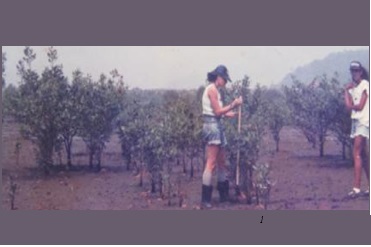
Figure 6: Mangrove restoration in 1992. (Source: Helena Barros)
The relational well-being in the community is relevant as women in the community, wives of fishers and/or fishers themselves, have reunited to fight for fishers’ and community’s rights after the Ultracargo disaster. It proved to be a starting point in Vila dos Pescadores for their fishing, environmental and conservation rights. This environmental disaster led community members to get involved with the Fisheries Institute and local NGOs. Locals are now more engaged as members host meetings and post pictures related to fisheries issues and mangrove conservation.
Fishers take pride in their profession and profound environmental knowledge of the mangrove areas of Cubatão, in the Santos Estuary. Once highly influential stakeholders, such as environmental NGOs and government agencies, give their support to fishers and community members, conservation efforts have a great potential for expansion and improving food security in this impoverished community. With respect to Vila dos Pescadores community, it has an invaluable pool of social capital and local environmental knowledge that can be channelled to conservation projects. Recently developed linkages between universities, municipal and state government agencies, NGOs and the community has led to a positive impact on the implementation of conservation initiatives in the community.
Some of the possible solutions to the problems of environmental degradation in Cubatão are: investing in public policies for environmental education in slums and the industrial hub; empowering communities in mangrove conservation projects; and intensification of dialogue on the environmental and sustainable development issues among government, business and civil society. Although dialogue is improving, conversations between the community and external entities needs to continue, and ensure that the message of conservation reaches the ears of policy makers and decision makers.
References
- Gillam, C. and Charles, A. (2018). Fishers in a Brazilian Shantytown: Relational wellbeing supports recovery from environmental disaster. Marine Policy 89: 77–89. Available at: https://doi.org/10.1016/j.marpol.2017.12.008
- Gillam, C. and Charles, A. (2019). Community wellbeing: The impacts of inequality, racism and environment on a Brazilian coastal slum. World Development Perspectives 13: 18–24. Available at: https://www.sciencedirect.com/science/article/ pii/S2452292917300620
- Gillam, C.F. (2016). ‘Effects of Social and Environmental Inequalities on the Wellbeing of a Slum Community: The case of Vila dos Pescadores in Southeast Brazil’. Master’s thesis (International Development Studies). Saint Mary’s University, Halifax, Nova Scotia, Canada. Available at: https://doi. org/10.1016/j.wdp.2019.02.006
- Global Environment Facility (GEF) UNDP [website]. Available at: https://www.thegef.org/project/effective-conservation- and-sustainable-use-mangrove-ecosystems-brazil
- UOL (2013). Map of Cubatao. Prefeita e vice de Cubatão (SP) têm mandatos cassados, mas seguem nos cargos. Available at: https://noticias.uol.com.br/politica/ultimas- noticias/2013/05/24/prefeita-e-vice-de-cubatao-sp-tem- mandatos-cassados-mas-seguem-nos-cargos.htm
Acknowledgements
We would like to extend our deep appreciation to the residents of the community of Vila dos Pescadores, and particularly to Community Leader José Arnaldo dos Santos (Vadinho), fishers Ana Paula Lourenço and Robson dos Santos and their family for the support for my field trips in the Santos Estuary; and Romeu Magalhaes (Municipal Secretariat for the Environment of Cubatão). This research was funded by the Robin Rigby Trust, which also supported development projects within the community of Vila dos Pescadores. We also acknowledge funding from the Social Sciences and Humanities Research Council of Canada, through the Community Conservation Research Network, and from the Natural Sciences and Engineering Research Council of Canada.
See below for the Portuguese language abstract for this community story, “Vila Dos Pescadores, Cubatão, Estado De São Paulo, Brasil: Melhorarando os meios de vida e promovendo o diálogo na Vila dos Pescadores, Cubatão, estado de São Paulo, Brasil.”

The documentary is part of Cintia Gillam’s Master’s of Arts in International Development Studies thesis at Saint Mary’s University, and is based on her field research trip between July and August 2014.



